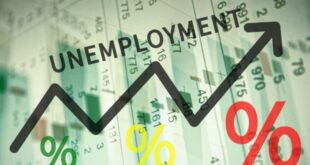The first numbers are in, and they aren’t pleasant to look at. March was the worst month for local manufacturers in more than four years.
We now know how much damage the Coronavirus can do to a major sector of the Inland Empire economy.
Unlike the most recent housing and employment numbers, which were compiled before the COVID-19 pandemic broke wide open locally, the region’s latest manufacturing data reflects March exclusively.
It is not a pretty picture.
The purchasing managers index, which measures the state of manufacturing in Riverside and San Bernardino counties, fell to 43.3 in March, the Institute of Applied Research and Policy Analysis at Cal State San Bernardino reported April 1.
Only one month earlier, the index was 57, an especially strong number. Anything 50 or above means manufacturing sector, and the local economy, is expanding. Below 50 means they’re contracting.
The 13.7 decline between February and March was the most severe month-over-month drop recorded by the institute since December 2015, when the index fell 10.2 points, to 42.1.
The index scored 50 or better for two consecutive years until last June when it unexpectedly fell to 46.3. It bounced back in July and August but dipped slightly below the line of demarcation when it fell to 49.7 in September.
From there it stayed above 50 until last month, when the monthly report turned into a clean sweep of bad news. Every category that makes up the index – production, new orders, Inventory, and employment – were headed in the wrong direction as the third month of the year ended.
Also, local purchasing managers were overwhelmingly negative regarding the Inland economy’s immediate future. 96 percent of those surveyed said they expect the Inland economy to get weaker in the next three months, and four percent said they expect it to stay the same.
Not one said they expect it get better.
Nationally, the outlook is about the same. In a survey, conducted from Feb. 28 to March 9 by the National Association of Manufacturers, 78.3 percent of respondents said the COVID-19 outbreak is likely to hurt their business financially, 53.1 percent said they expect in the next few months to change how they do business and 35.5 percent said they were experiencing disruptions to their supply chain.
Barbara Sirotnik, director of the institute and a co-author of the monthly index, might have been searching for a silver lining when she suggested the downturn had one positive trait. Unlike past slowdowns, there was no arguing what caused this one.
She also suggested that, once the Coronavirus pandemic is under control, the local and national economies will likely rebound quickly. In the meantime, the Inland manufacturing sector – a vital part any economy because it produces high-paying jobs – will inevitably struggle.
Even though it takes three consecutive months of the index landing above or below 50 to establish a trend, Sirotnik did not hesitate to use the dreaded “R” word in describing the present state of Inland manufacturing.
“I don’t think there’s any question we’re in a recession and that we’re going to be there for awhile,” Sirotnik. “I don’t see any other way to put it. The problem is, no one knows for how long. If it extends into the fall, we’ll be in a big hole, but if they can flatten the curve and get control of this thing soon, we should be OK.”
Because it’s not as flexible as other sectors, manufacturing is at a disadvantage during a slowdown. Anyone who works with machinery cannot work at home, and because there’s machinery involved a manufacturer can’t change their business.
A retailer might able to change what they sell quickly, to get out of a slowdown or take advantage of a trend, but a manufacturing business can’t pivot like that.
“Most of the time you’re talking about very precise machinery that you can’t retool,” Sirotnik said. “Typically, about 80 percent of your workforce works on that kind of equipment.”
One Inland manufacturer says he isn’t concerned about having to shut down his business or having to let some employees go.
A&R Tarpaulins Inc. in Fontana makes canopies, awnings and tarps, many of which are used by the aerospace industry.
The 44-year-old business has been declared essential to the U.S. defense industry, so it doesn’t have to worry about a slowdown in orders, at least for now, said Bud Weisbart, the company’s vice president.
“I’ve never let anyone go and I don’t expect to now,” Weisbart said. “The retailers are the ones who are going to get hurt, especially the mom and pops, because their supply chains are getting interrupted.
If you’re a manufacturer, the key to surviving a slowdown is to make more than one or two products, according to Weisbart.
“A lot of manufacturers pigeonhole themselves,” Weisbart said, “They make awnings, and they do well, but they don’t make anything else, usually because they don’t want to take risks. If you try something new, it’s a risk. “But you need to take advantage of all the skills your people have.”
Yes, the slowdown is severe, but the economy will recover relatively quickly and manufacturing will recover along with it, said Jay Prag, professor of economics at the Drucker School of Management at Claremont Graduate University.
“There will probably be a 10 percent to 20 percent drop in the second quarter, but by the end of the year we should be back to close to normal,” Prag said.
 IE Business Daily Business news for the Inland Empire.
IE Business Daily Business news for the Inland Empire.

